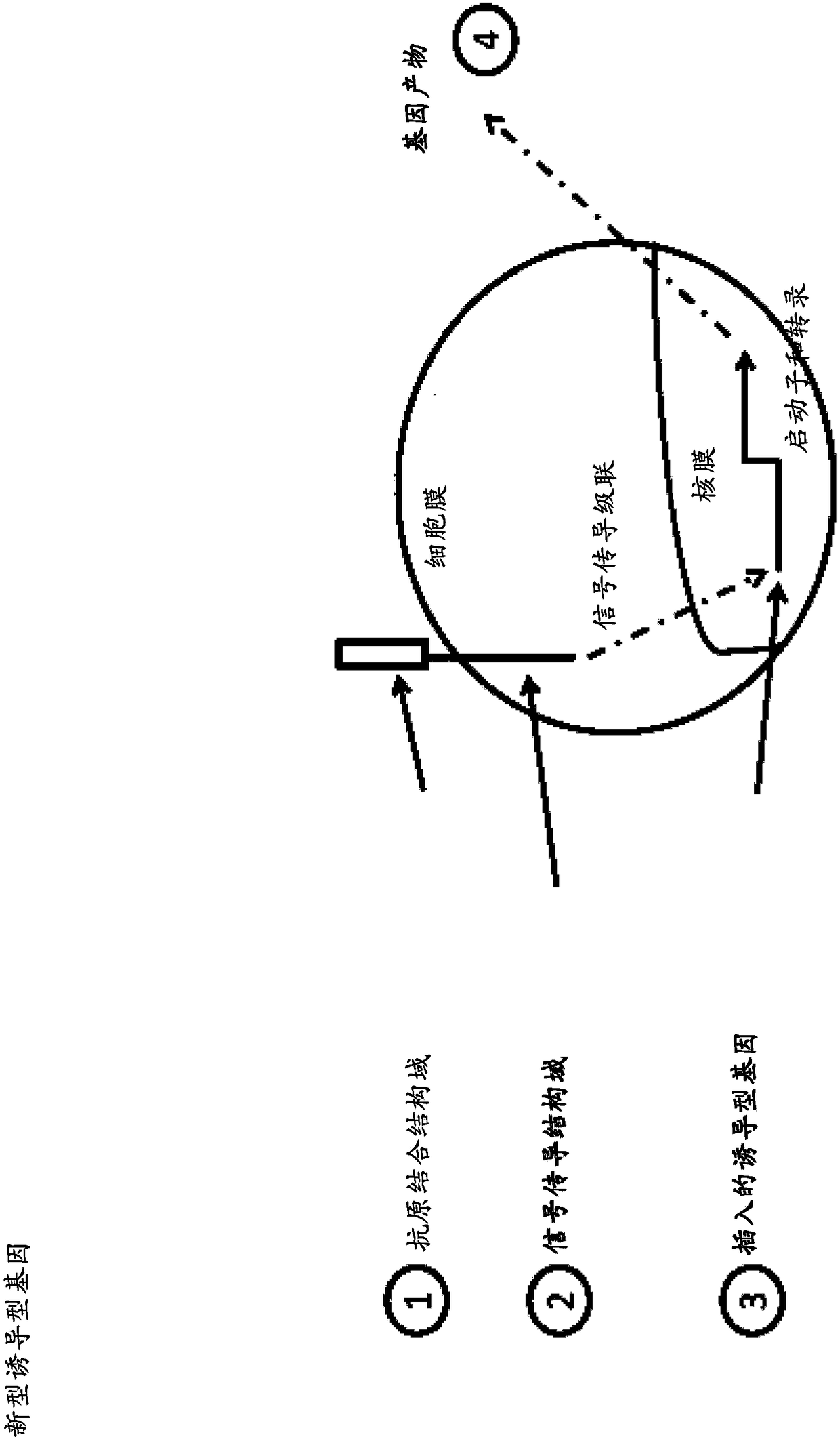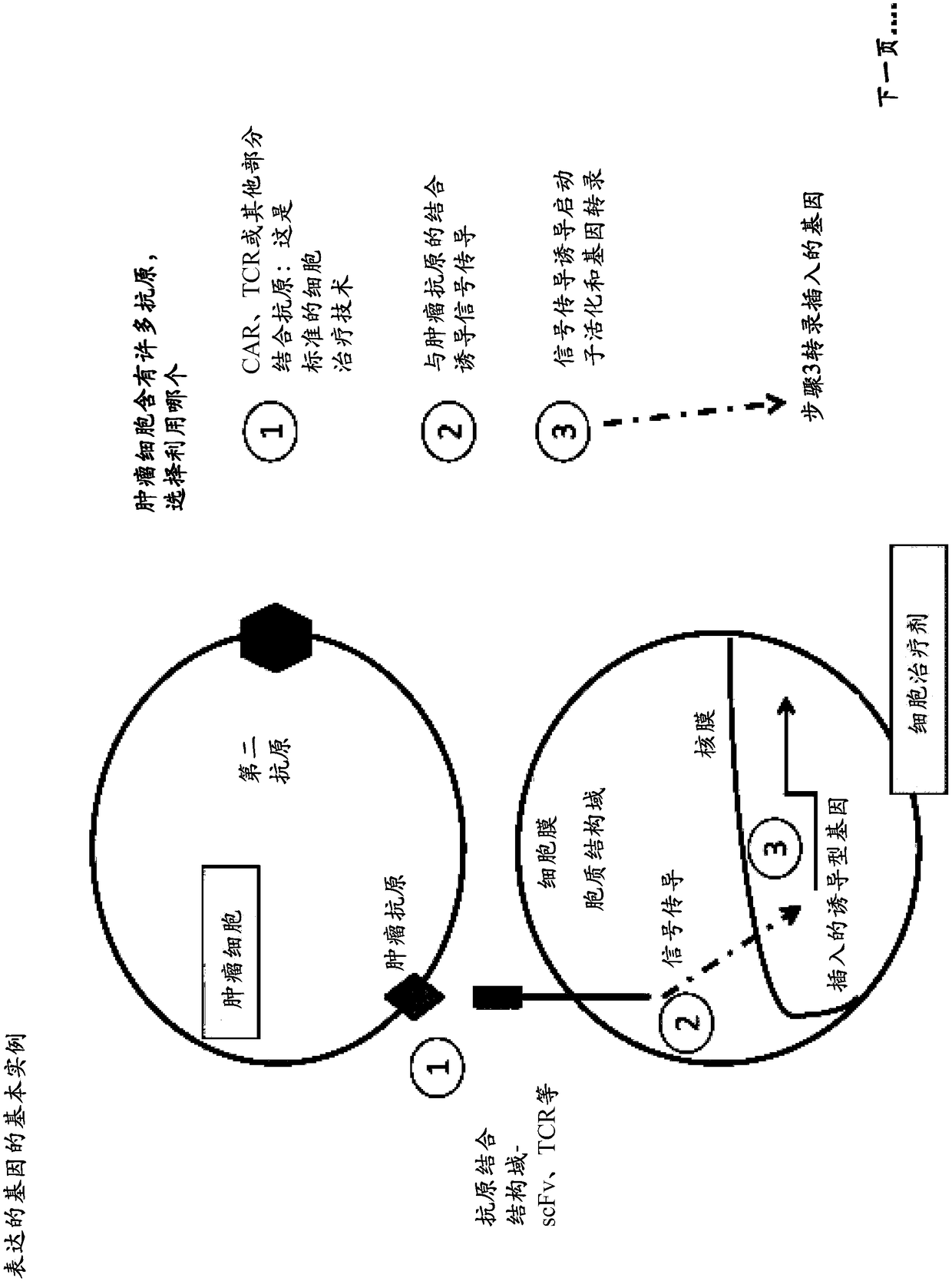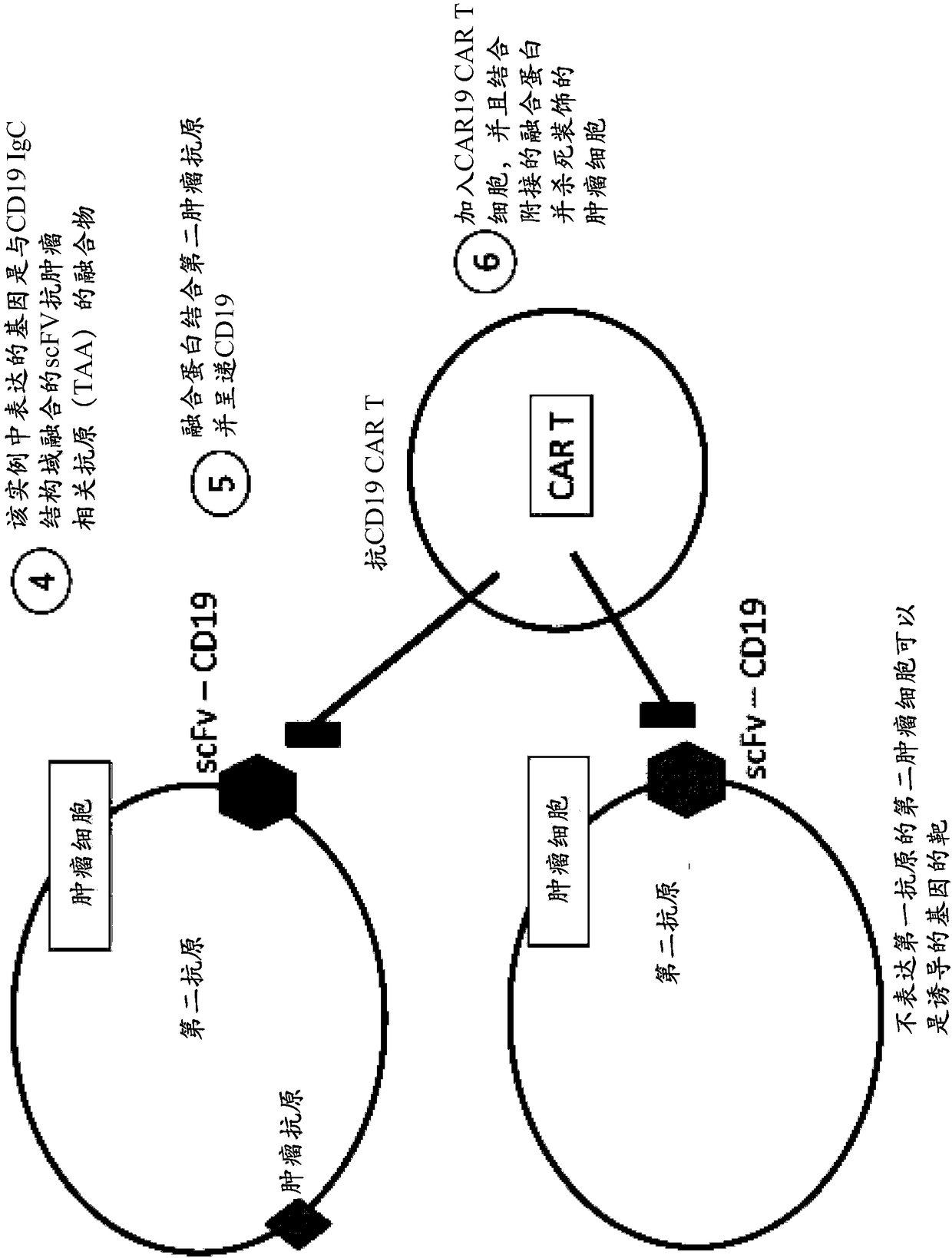Compositions and methods for treatment of cancer
A conjugate, cell therapy technology, applied in biochemical equipment and methods, chemical instruments and methods, for targeting specific cell fusion, etc.
- Summary
- Abstract
- Description
- Claims
- Application Information
AI Technical Summary
Problems solved by technology
Method used
Image
Examples
example 1
[0391] Example 1. Construction and expression of antibody-CD19 fusion protein
[0392] The fusion protein containing CD19 and full-length antibody or scFv uses anti-EGFR monoclonal antibody palimumab, humanized anti-c-MET monoclonal antibody LY2875358 (emibetuzumab) or anti-HER2 monoclonal antibody trastuzumab To produce. The C-terminal lacks 13 amino acids and includes two C2-type Ig domains of CD19 ("CD19-D1+D2", which contains the non-coding sequence in the CD19 gene and the coding sequence of exons 1-4) of CD19 The extracellular domain is fused to the full-length antibody in various orientations, such as Figure 13 Exemplarily depicted in. In some constructs, only CD19 domain 1 ("CD19-D1") or domain 2 ("CD19-D2") is used for the fusion protein. In some constructs, the full-length extracellular domain of CD19 ("CD19-ECD"; SEQ ID NO: 112) is used.
[0393] Palimumab-CD19 fusion protein is produced in 293T cells by expressing a vector containing a nucleic acid encoding Palimuma...
example 2
[0400] Example 2. Antibody-CD19 fusion protein is recognized by anti-CD19 antibody
[0401] Various methods were used to determine the ability of the anti-CD19 antibody (FMC63) to bind to the various antibody-CD19 fusion proteins described in Example 1 to demonstrate specific binding.
[0402] Figure 17A to 17D The binding of the Palimumab-CD19 fusion protein described in Example 1 to FMC63 is depicted. The ELISA plate (Pierce) was coated with 1 μg / ml FMC63 anti-human CD19 antibody (Millipore) overnight at 4°C. The plate was blocked with 0.3% NF milk powder in TBS at room temperature for 1 hour. The cell culture supernatant was directly added to the wells in the ELISA buffer, and then serially diluted at a dilution of 1:3 to 1:2187. The ELISA plate was gently washed three times with TBST (50 mM Tris, 150 mM NaCl, 0.05% Tween 20) ELISA buffer, and then peroxidase-conjugated polyclonal anti-human IgG was added to detect bound human antibodies. In this assay format, human antibodi...
example 3
[0406] Example 3. LY2875358-CD19 fusion protein binds to A549 cancer cells and binds to anti-CD19 antibody
[0407] LY2875358-CD19 fusion protein (the construct “37+10” described in Example 1) was tested for binding to A549 cancer cells and FMC63 (also called “FACS” or “flow cytometry”) by fluorescence activated cell sorting ( Anti-CD19 antibody) ability. A549 cells express c-MET, a cancer cell-associated protein specifically recognized by LY2875358. LY2875358 HC (SEQ ID NO: 7) and LY2875358LC (SEQ ID NO: 10) were expressed in 293T cells, and the cell culture supernatant was incubated with A549 cells. After 30 minutes of incubation on ice, the cells were washed with FACS buffer (PBS with 1% BSA and 0.1% sodium azide). The bound antibody is then detected by incubating the cells with an anti-human IgG-fluorescein isothiocyanate (FITC) conjugate, which emits a fluorescent signal when activated by a specific laser in the flow cytometer . The resulting FACS signal can be regarded ...
PUM
 Login to View More
Login to View More Abstract
Description
Claims
Application Information
 Login to View More
Login to View More - R&D
- Intellectual Property
- Life Sciences
- Materials
- Tech Scout
- Unparalleled Data Quality
- Higher Quality Content
- 60% Fewer Hallucinations
Browse by: Latest US Patents, China's latest patents, Technical Efficacy Thesaurus, Application Domain, Technology Topic, Popular Technical Reports.
© 2025 PatSnap. All rights reserved.Legal|Privacy policy|Modern Slavery Act Transparency Statement|Sitemap|About US| Contact US: help@patsnap.com



